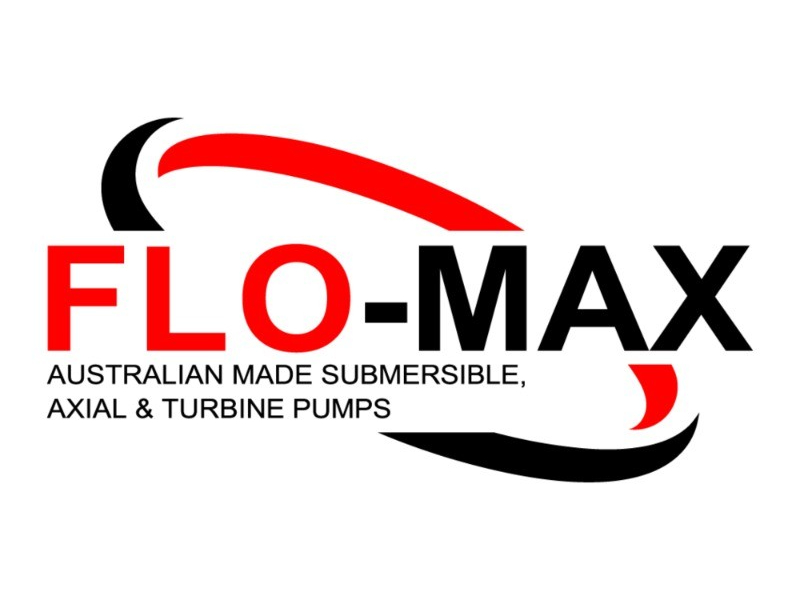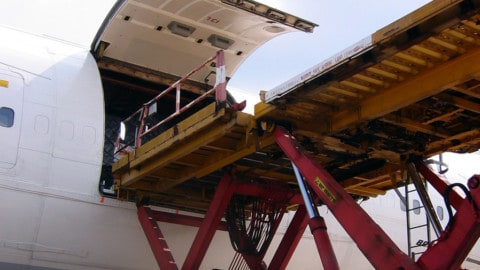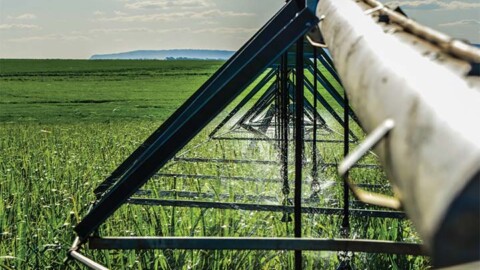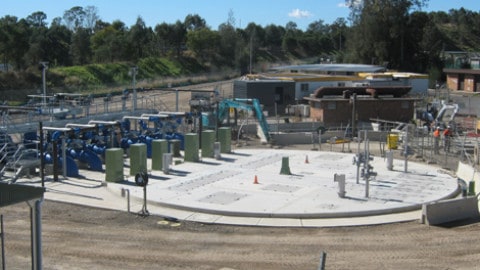By John Waterhouse, Principal Hydrogeologist, Golder Associates
Managing water is crucial in avoiding costly problems in mine management. How can operators anticipate problems and achieve good groundwater management?
Key issues in mine water management include depressurisation of slopes in some open pit mines, avoidance of inrushes, particularly in underground mines, and other environmental issues. Typical environmental issues requiring regulatory approval are those that may be associated with dewatering impacts and obtaining approvals for mine water discharge off a mine site.
Why dewater a mine?
Mines that are developed below the water table have a potential for groundwater inflows, with such inflows varying considerably. If the inflow rate is small due to low permeability materials forming the walls of the mine, pumping to dewater the mine may not be necessary or practicable.
In some situations, a simple sump to collect inflows to be pumped out might be all that is required. Such a sump would be required in any case to collect and remove stormwater.
Dewatering will be required if there are likely to be inflows of groundwater at rates that affect mining operations, particularly traffic movements and blasting.
Traffic movements and wet blasting
If the pit floor cannot be driven over by heavy machinery because of wet materials (e.g clays that soften when driven over repeatedly) production will be affected. Soft and wet materials at and below the water table can be difficult to manage, because they may have low permeability and not be amenable to simple dewatering by pumping. In these situations, the most appropriate approach is to drain the floor by pumping from deeper permeable zones or from deep sumps.
The best solution is to anticipate the problem by investigating ground conditions properly ahead of pit development. If necessary, start dewatering much earlier and perhaps reduce the vertical rate of mining so that the groundwater conditions can accommodate ongoing traffic movements. With foresight and planning, the costs of loss of access to the pit and unnecessary sheeting of working areas with crushed rock can be avoided.
Similarly, if the water table has not been lowered ahead of production, blast holes may fill with groundwater, resulting in misfires or requiring a switch to wet blasting explosives, both at significant expense.
Poor trafficability and wet blasting can typically (but not always) be managed by prior dewatering to lower the water table below the pit floor in some way. Dewatering methods include deep sumps and dewatering wells. These require planning to integrate them cost-effectively with the mine plan and production schedule and will take time to construct, so they should be addressed early to avoid interruptions to mine production.
Dewatering methods
The decision to design and operate a dewatering system should be the outcome of the design process, not an initial assumption. A well-managed investigation and design program will identify the most practical and cost-effective dewatering solution and optimise equipment selection and the construction schedule.
Dewatering can be achieved in several ways:
- Pumped wells or deep sumps inside the pit
- Pumped wells outside the pit
- Free flowing drillholes inside the pit, the inflow being collected and pumped from one or more sumps
- Drainage galleries with fans of drillholes
- Pumping from older, deeper mine workings.
All of these methods are designed to lower the water table so that mining operations can proceed in an essentially dry environment. Depending on the size of the mine and the groundwater conditions, one or more sumps will be necessary, often in parallel with pumped wells.
- Poor trafficability due to rapid mining to a water table in clay-rich materials
- Line of free-flowing drainholes reducing groundwater pressures in a coal mine wall.
Issues associated with practical dewatering
Dewatering designs need to reflect what is realistic in the mine operations environment. For example, in-pit wells are almost always a challenge for mine workers.
Nonetheless, in situations where they are necessary, in-pit wells can be accommodated if pit floors are large enough and the rate of mining is such that pumps can operate for many months between interruptions.
Typically, in-pit wells are used in orebodies that are extremely permeable relative to the host rocks and where the mine walls extend outside the deposit. Sometimes, in-pit wells are used, despite the logistical difficulties, where key permeable structures can be identified inside the pit.
If the design process identifies the need for dewatering, designing the appropriate system is not necessarily difficult, but there are practical issues including:
- access to appropriate locations to install and operate the dewatering wells
- maintaining near continuous pumping at appropriate rates
- accommodating changes in mine plans
- designing appropriate pumping and piping systems for the likely range of pumping rates and to accommodate, at some sites, aggressive water chemistry, particularly if there are acid-generating conditions
- discharging surplus water, if there is any, to the natural environment outside the mining lease, including treatment of the water if necessary.
Depressurisation of pit walls
Pit slope design often depends upon groundwater pressures in the materials behind the wall. Groundwater pressures at any point are typically proportional to the depth of that point below the water table.
In practice, this means that for every 10m below the water table, the pressure increases by 98 kilopascals. The pressure is zero at the water table itself. For open-pit mines deeper than 100m, the groundwater pressures can be as high as megapascals, approaching or exceeding the strengths of some mined materials.
Groundwater pressure is the only property of a rock mass that can in practice be changed by engineered activities. It is possible to lower pressures with pumped, or usually, free-flowing drillholes, in some cases allowing steeper slopes without an increased risk of failure.
Some structures along which slope failures may occur have strengths that are sensitive to pressure. These may be the focus for dewatering activities.
Reducing pressure is extremely important to achieve slopes without unacceptable risk of slope failure in a cost-effective manner. The alternative of creating slopes that are unnecessarily flat for the required stability may run to hundreds of millions of dollars of additional mining costs over the life of a large mine.
For pits with high permeability materials in the walls, the dewatering of the mine floor may also drain and depressurise the walls. However, in many situations, wall rocks may not depressurise so easily. Examples include layered sedimentary rocks in coal mines and high permeability orebodies surrounded by lower permeability host rocks, such as many iron ore mines in Western Australia.
Groundwater discharge issues
Dewatering and depressurisation may produce a significant volume of water. In many Australian mines, the dewatering discharge can be used at the process plant and for dust suppression on haul roads. However, in some situations there is a surplus of water which may need to be discharged.
Regulatory authorities generally require the estimation of likely rates of discharge and the water quality as part of the approvals process. As government and community expectations increase, approvals for discharge to the environment are facing more scrutiny and may take more time.
Indeed, they may not necessarily be granted. For example, discharge to salt lakes, historically a common solution in Western Australia, is not automatically approved now. Large discharges of even good quality groundwater will not be acceptable in creeks and rivers that flow through arid zone national parks.
Therefore, in order to develop a groundwater management plan that meets both technical requirements and prevailing environmental standards, early investigation of groundwater quality and assessment of options for water treatment, discharge or recharge is highly recommended.
Conclusion
Dewatering helps mining operations and is a hydrogeological challenge, whereas depressurisation is also a geotechnical matter. It is fundamentally important to have a team approach so that mining engineers, mine geologists, geotechnical engineers and groundwater specialists work together to recognise and accommodate groundwater-related factors. In this way, the risk of slope failure and the associated risks to personnel and increased costs to owners can be minimised.
Water discharge from mine sites cannot be taken for granted and approvals are not automatic. Like all approval processes, time will be required and sufficient allowance needs to be made for field studies, analysis and reporting.
When problems develop, it is often a consequence of inadequate early thinking. Solutions to dewatering and depressurisation problems after they have appeared are typically time-consuming and costly.
Experience shows that operators should address groundwater-related aspects of mining early in the process. The engagement of a multi-disciplinary team early in a mine’s life-cycle will benefit the owner through well thought out and appropriate plans, thereby offering significant cost savings.
John Waterhouse is a Principal Hydrogeologist at Golder Associates in Perth. He has worked on mine dewatering and depressurisation projects across Australia and overseas for more than 30 years. He may be contacted on (08) 9213 7600 or via email at [email protected].
























